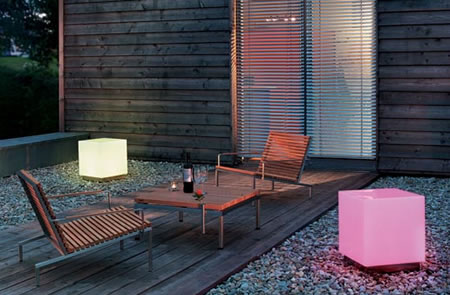We all know the importance of light installation in our homes and offices. Without light, we probably could not get anything done. Light is an important feature that affects not only the appearance of a room or space, but it may also be utilized accordingly to set the mood and the atmosphere in a room.
The way we look and perceive an object is significantly influenced by lighting. As a design element, light will not only provide visual comfort; likewise, light can also be utilized to produce emotional reactions from the viewers. Appropriate applications of light patterns along with differing illumination levels and suitable colors of light, we can achieve the desired mood effect of lighting. Lighting installation can help set up the mood for somberness, relaxation, fun, comfort and festivity. The lighting fixtures to be used, such as lamps, are available in many types, patterns, textures, colors and design that can further enhance the desired effect.
You may choose high levels of illumination if you want to create a cheerful ambiance. High illumination is also effective in stimulating people to become alert and ready for an activity. On the other hand, low levels of light can produce an air of intimacy, relaxation and rest.
Soft lights, which appear mellow and subtle, are effective in minimizing shadows; thus making the room more peaceful and laid back. Yet care must be taken in using diffused light as it may cause the room to look less interesting and uninviting. Hard lights, conversely, are directed light which can highlight and provide shadows. They may also be used to provide model form and emphasis on a surface texture. Hard lights are not typically utilized as main light sources but only as supplements. Hard light such as when light shines on metallic surfaces or reflects on crystals may create an air vivaciousness.
Colors do have important effects on our mood and behavior. Colors applied in lighting designs such as use of colored lighting can help enhance the ambiance and atmosphere. Colored lights are frequently utilized in stage and film sets to enhance the mood of a movie scene or play. At home, however, if colored lights are wished to be used, the application need only be saturated or less intense. If done or applied overly, the colored lighting will only destroy how materials and people look instead of enhancing them. For example, you may use a lamp tinted with rose color but not red as it may suppress the blush of the lips and cheeks.
If a somber effect is desired, consider using downcast light patterns. Remember to provide emphasis on the dramatic areas of the room so that a dull effect may be eliminated. Colored lights must only be in moderation.
A mood of affection may be achieved by using colors and shades from the red color spectrum such as orange, pink, yellow and amber. To achieve an opposite effect, make use of colored lights with hues from the cool end spectrum such as green, blue and violet. Yet be cautious in utilizing blue, green and blue green to prevent creating ghastly effects in the room.

No comments:
Post a Comment